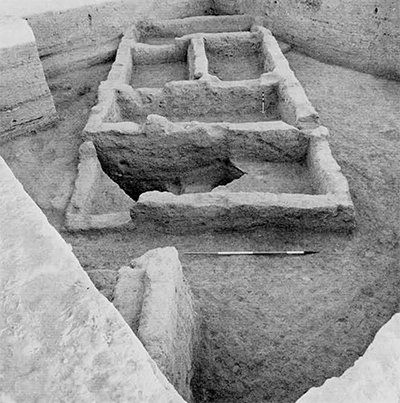|
Other Archaeological Sites / The Neolithic of the Levant (500 Page Book Online) Neolithic Abu Hureyra Updated March 21st 2020
Selected Excerpt on Abu Hureyra
The Neolithic of the Levant (1978)
The plant remains include large quantities of einkorn wheat and some grains of barley and rye; there were also pulses such as lentils and vetches and a wide range of other edible fruits, nuts and seeds. The plant remains were all morphologically wild but it seems likely that the einkorn at least was being deliberately cultivated. Many seeds of weed species were found typical of cultivated fields in the area today. Most of the meat food came from gazelle and onager and it is suggested that these animals were being either selectively hunted or perhaps herded. It is clear that the 9th millennium BC community at Abu Hureyra was already involved in incipient farming activities. The Neolithic settlement of the 7th millrennium BC is also of great importance because of its enormous size (15 hectares): larger than any other recorded site of this period (even Catal Huyuk). Rectangular houses of pise were built up into a mound circa 5 metres high; both floors and walls were sometimes plastered and some wall plaster bears traces of painting. Most of the Neolithic levels were aceramic but in the uppermost levels after circa 6000 BC a dark burnished pottery appears ... (AHSFC)
Evidence of Cosmic Impact at Abu Hureyra Syria at the Younger Dryas Onset (~12.8 ka) by Andrew M. T. Moore et al in Science Reports Published 06 March 2020 For Interesting Lectures on the Younger Dryas and Catastrophism See Randall Carlson on his You Tube Channel
The History of the Ancient Near East Electronic Compendium |

